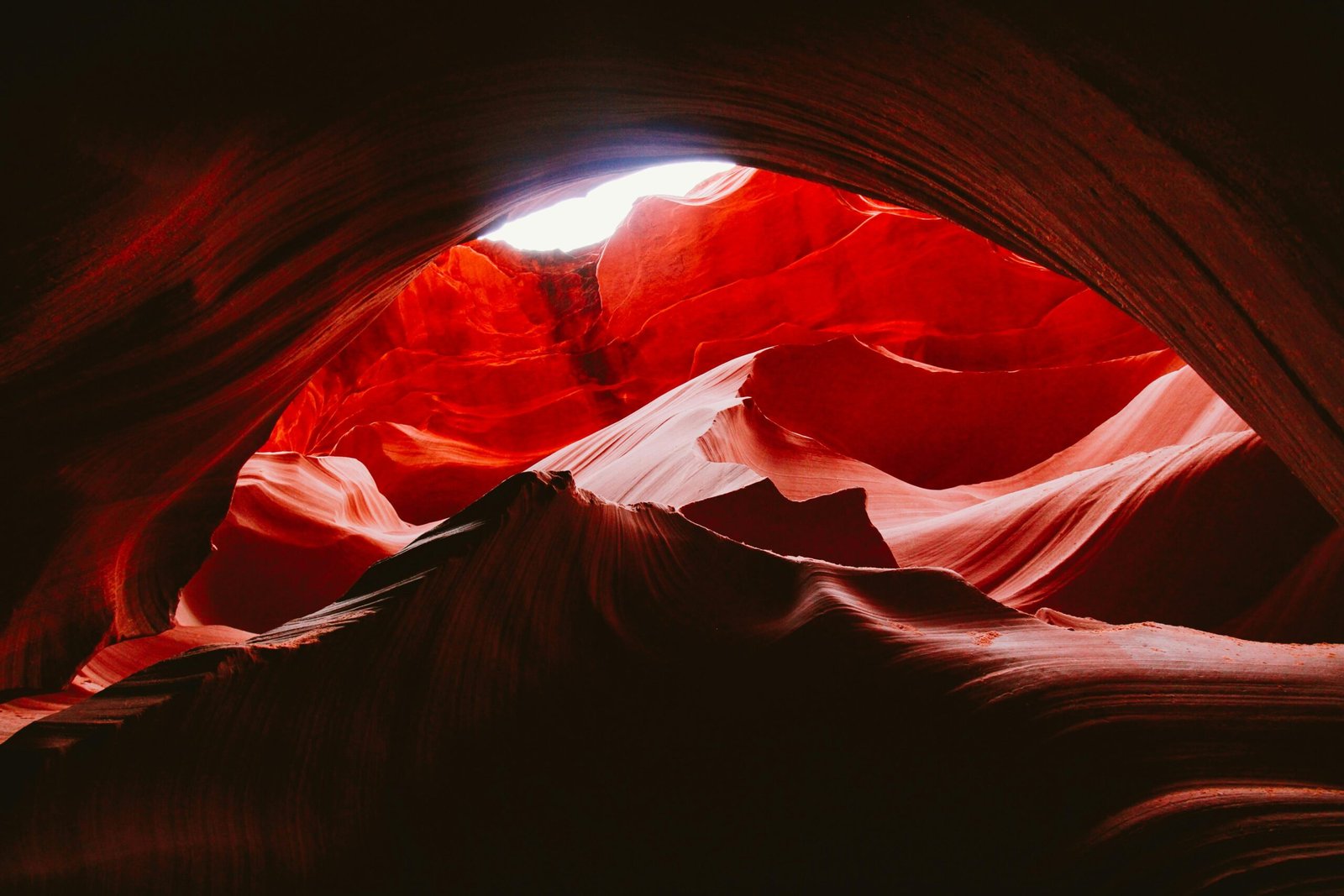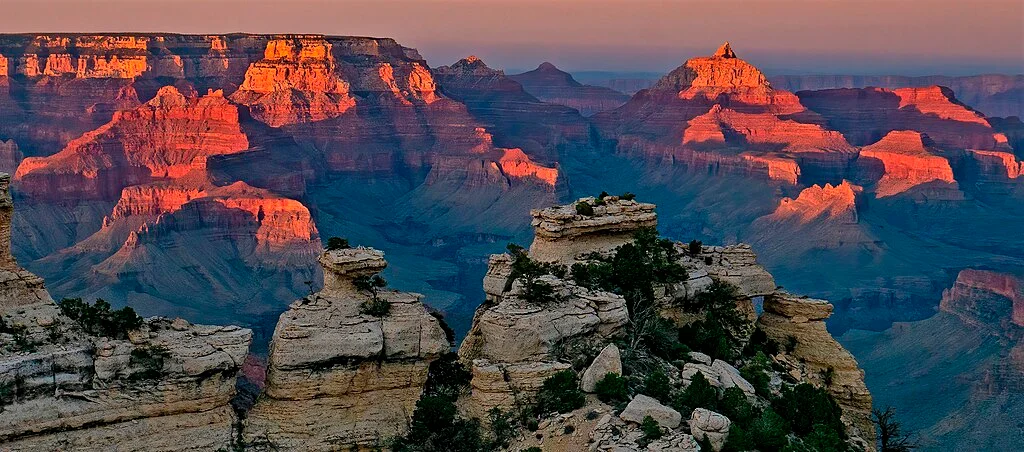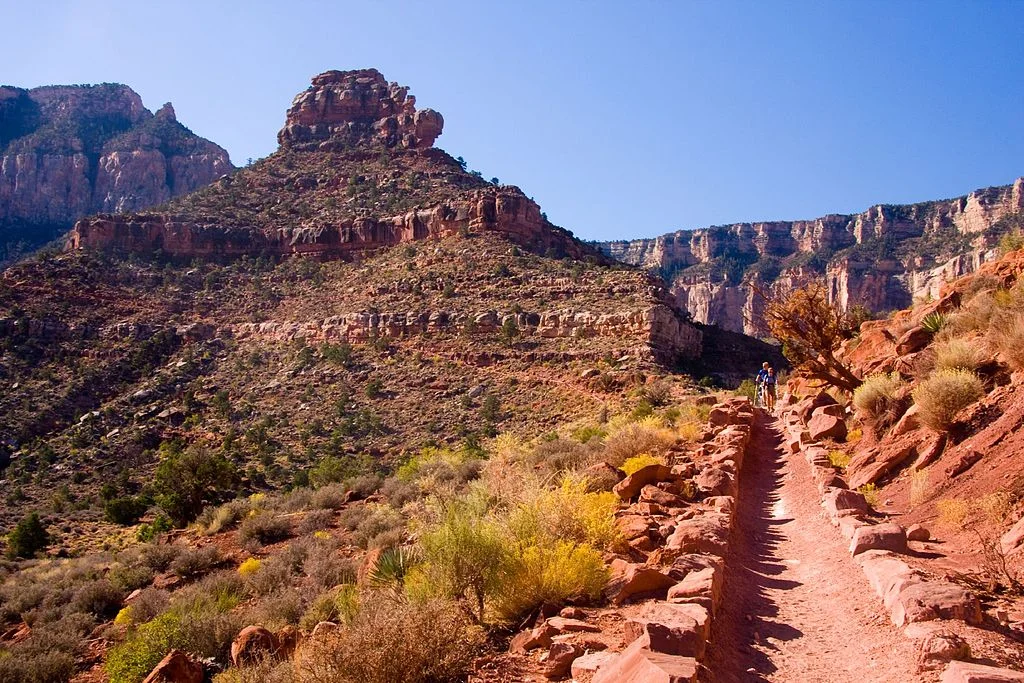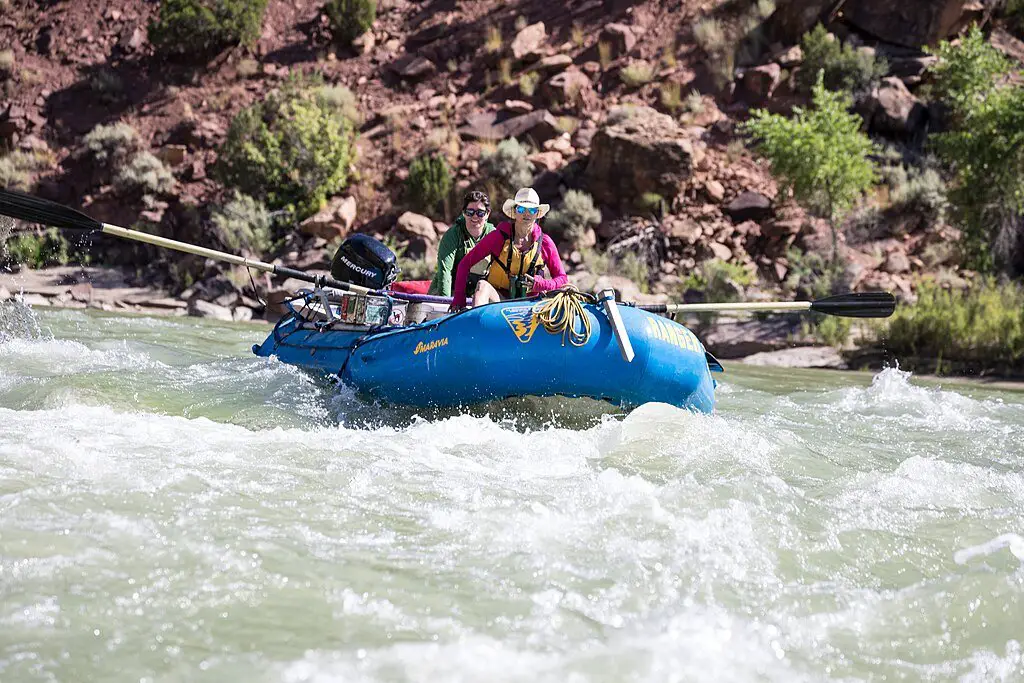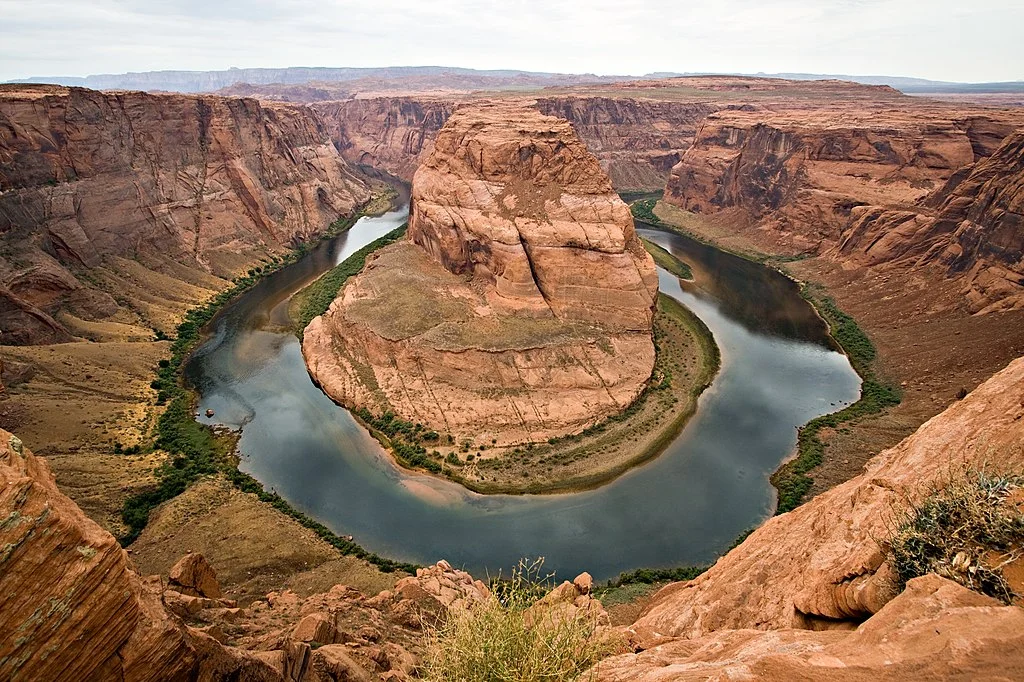The Marvel of Grand Canyon Viewpoints
The Grand Canyon is home to numerous viewpoints that offer stunning panoramic vistas, making it an essential destination for any nature enthusiast. Among these, Mather Point stands out as one of the most accessible and popular locations for visitors. Located just a short walk from the Grand Canyon Visitor Center, Mather Point provides breathtaking views of the vast canyon descending into the Colorado River. The viewpoint is particularly enchanting during sunrise, when the early morning light casts a warm glow over the rock formations, revealing a spectrum of colors that change as the sun rises higher in the sky.
Another must-visit location is the Yavapai Observation Station, which is known for its geological exhibits and knowledgeable rangers. From this viewpoint, visitors can enjoy a diverse perspective of the canyon and its intricate formations. The observatory features a large viewing area, making it ideal for families and groups. The station is also equipped with educational resources that enhance the experience, allowing visitors to appreciate the geological history and natural beauty of the area. Its accessibility makes it a convenient stop regardless of the hiking abilities of its guests.
Hopi Point is also noteworthy, especially for photographers seeking the perfect shot of the sunset. This renowned viewpoint extends out into the canyon, offering unobstructed views of the canyon walls bathed in vibrant hues as daylight fades. The vantage point is perfect for capturing the play of light and shadow that occurs as the sun descends. Arriving early to secure a good spot is advisable, as this location can become crowded during peak visiting times, particularly in the summer months.
Each of these viewpoints at the Grand Canyon highlights the natural beauty of the area and provides unique opportunities for visitors to connect with the landscape, making them indispensable stops on any trip to this iconic destination.
Hiking Trails for Every Adventurer
The Grand Canyon offers an array of hiking trails, each designed to cater to varying skill levels and interests. Among the most popular is the Bright Angel Trail, an iconic route that spans approximately 9.5 miles one way, descending into the canyon from the South Rim. With a moderate difficulty level, this trail is well-maintained and features numerous rest stations equipped with drinking water during the hiking season. Hikers are treated to breathtaking views of the canyon’s rock formations and a chance to experience the diverse ecosystem that thrives at different elevations.
Another notable trail is the South Kaibab Trail, which is acclaimed for its panoramic vistas but demands a higher level of fitness. This trail is shorter, measuring around 6 miles one way, yet it is steeper and lacks water sources. Hikers are rewarded with some of the most spectacular scenery in the canyon, including uninterrupted views from Ooh Aah Point and Cedar Ridge, which are popular turnaround spots for those looking for a scenic yet challenging adventure.
The Rim Trail offers another experience entirely. Stretching for about 13 miles, it provides a relatively easy hike along the canyon’s edge, allowing hikers to absorb the stunning landscapes without the strenuous descent. This trail is ideal for families and casual walkers, offering numerous viewpoints where one can pause, reflect, and take photographs of the magnificent canyon below.
When planning a hike in the Grand Canyon, preparation is crucial. Hikers should consider factors such as weather conditions, hydration, and appropriate footwear. The best times to hike are typically during the spring and fall when temperatures are milder. Additionally, adhering to safety protocols and staying on marked trails will ensure a safe and enjoyable experience.
River Rafting: A Thrilling Adventure
River rafting in the Grand Canyon is a quintessential adventure that draws nature lovers and thrill-seekers alike. The Colorado River winds through this magnificent landscape, offering varying levels of rafting experiences. Adventure enthusiasts can choose from guided tours or opt for self-guided trips, depending on their comfort level and expertise. Guided tours are often preferred for those who are new to rafting or who want to enjoy a safer, more curated experience, led by experienced river guides familiar with the river’s nuances.
The rapids along the Colorado River are classified into six categories, ranging from Class I, which are easy and suitable for beginners, to Class VI, reserved for the most extreme conditions only recommended for expert paddlers. Most guided trips typically focus on Class II to Class IV rapids, which provide an exhilarating experience without overwhelming participants. The duration of the trips can vary; day trips usually span around 10 to 16 miles, while multi-day excursions may cover more extensive stretches, lasting four to seven days. Costs generally depend on the length of the trip and the type of service, with guided adventures ranging from several hundred to over a thousand dollars per person.
Participants can expect breathtaking views of the canyon’s towering cliffs and rugged terrain as they navigate the pristine waters. Safety is paramount while river rafting, and essential precautions include wearing life jackets, understanding paddling techniques, and following guides’ instructions diligently. Booking in advance is highly recommended due to the popularity of these excursions, especially during peak seasons, allowing adventurers to secure their spots and have an unforgettable outdoor experience.
Many who have experienced rafting in the Grand Canyon share stories of an unparalleled connection to nature and the rush of adrenaline as they tackle the river’s wild beauty. This unique combination of excitement and stunning scenery truly marks river rafting as one of the essential adventures for anyone visiting the Grand Canyon.
Preserving the Beauty of the Grand Canyon
The Grand Canyon, a UNESCO World Heritage site, is not only a stunning natural wonder but also a precious ecosystem that requires ongoing conservation efforts. The park faces numerous challenges, including environmental degradation and the significant impacts of tourism. With millions of visitors exploring its majestic landscapes each year, it is crucial that steps are taken to practice responsible tourism to ensure the preservation of this breathtaking location for future generations.
One of the primary ways visitors can contribute to conservation is by adopting the Leave No Trace principles. These principles encourage individuals to minimize their impact on the environment. Simple actions such as staying on designated trails, carrying out all waste, and being mindful of noise levels can significantly reduce the ecological footprint left behind by tourists. By practicing these guidelines, visitors help protect the delicate flora and fauna that inhabit the canyon.
Additionally, respecting wildlife is paramount. The Grand Canyon is home to diverse species, some of which are endangered or sensitive to human interaction. It is vital for visitors to observe animals from a distance and avoid feeding them, as this can alter their natural behaviors and disrupt their diets. Understanding and appreciating the intricate relationships within this ecosystem fosters a sense of responsibility among visitors.
Supporting local conservation initiatives can further enhance one’s contribution to preserving the Grand Canyon. Many organizations work tirelessly to restore habitats, conduct research, and promote awareness about the park’s vulnerabilities. Tourists can support these efforts by donating, volunteering, or merely spreading the word about the importance of conservation in this iconic landscape.
Emphasizing sustainable practices during visits is essential for maintaining the Grand Canyon’s grandeur. Every action counts, and dedicated efforts to protect this natural gem will ensure it remains an awe-inspiring destination for years to come.

